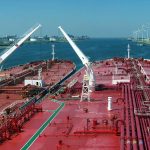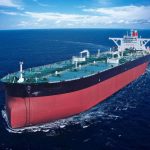If it is only the love triangle that you are familiar with, just read this article to know more about the flammable fire triangle in relation to Inert gas systems on board ships. After all the chemistry of both is symbolically related to fire!!!
Introduction
Ships contain huge tanks which carry cargo and this cargo is crude oil or any other flammable material proper atmosphere needs to be maintained inside those tanks. Otherwise you can well imagine that the tank could literally act like a bomb. Hence these ships have inert gas systems which are meant to prevent such a situation. Learn about a few basic principles of IG systems in this article
The Flammable Triangle
Flammable range refers to the concentration of a gas in air, when the mixture of that hydrocarbon gas and air could lead to ignition. If you think that there is only a minimum amount of hydrocarbon gas below which the mixture will not ignite you are partly right in saying so. The full truth is that even above a certain upper limit the mixture will not ignite as well. These two limits are logically known as the lower flammable limit and the upper flammable limit respectively. Though it would be difficult to give a detailed analysis of the upper and lower limits for each type of gas, a rough idea would put these estimates between 1% and 10% by volume of the hydrocarbon gas in air.
If you are wondering there the triangle concept comes into the picture just take a closer look at the picture shown below and you will be in a position to understand better. The picture shows a graph drawn between the percentage of oxygen by volume vis-à-vis the percentage by volume of hydrocarbon gas inside a tank on a ship. The black coloured triangle which you see towards the right hand side of the graph is the deadly triangle.
If you are big confused about the lot of dotted lines showing various conditions just don’t bother about it. We will learn more about that as we progress in our study of inert gas systems on board ships. For the time being you just need to remember that if you want to keep your tanks and your ship safe, just remain out of the danger zone depicted by the black coloured flammable triangle.

Also keep in mind that the line AB (somewhat vertical line on the right hand side) shows points C and D and those are the lower and upper flammable limits for the mixture as we had mentioned before. If you are not clear about the area or the flammable range to be triangle rather than a straight line just read next topic which explains this concept in little more detail.


